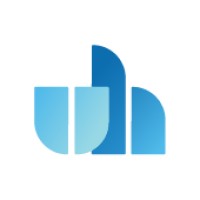
University Hospital Company Cyber Security Posture
uhnj.orgUniversity Hospital is an independent medical center with more than 500 licensed beds, an active medical staff of more than 600, and over 3,000 employees. Located on a sixty-three acre campus, University Hospital is a regional resource for advanced care in a wide range of medical specialties. University Hospital is the only hospital in New Jersey to be awarded Gold Plus recognition by the American Heart Association and the American Stroke Association for Heart Failure and Stroke. Designated as a Level 1 Trauma Center, the Hospital maintains 24-hour in-house coverage by general surgeons, and prompt availability of care in specialties such as orthopedic surgery, neurosurgery, internal medicine, plastic surgery, and pediatrics. As part of our mission to serve the residents of Newark and surrounding communities, University Hospital is also proud to be the principal teaching hospital of New Jersey Medical School, Rutgers School of Dental Medicine, the School of Health Related Professions, and the Rutgers School of Nursing.
University Hospital Company Details
university-hospital
1742 employees
10394.0
62
Hospitals and Health Care
uhnj.org
Scan still pending
UNI_5135063
In-progress
Between 800 and 900
This score is AI-generated and less favored by cyber insurers, who prefer the TPRM score.
 University Hospital Global Score
University Hospital Global Score.png)

University Hospital Company Scoring based on AI Models
| Model Name | Date | Description | Current Score Difference | Score |
|---|---|---|---|---|
| AVERAGE-Industry | 03-12-2025 | This score represents the average cybersecurity rating of companies already scanned within the same industry. It provides a benchmark to compare an individual company's security posture against its industry peers. | N/A | Between 800 and 900 |
University Hospital Company Cyber Security News & History
| Entity | Type | Severity | Impact | Seen | Url ID | Details | View |
|---|---|---|---|---|---|---|---|
| University Hospital | Ransomware | 100 | 4 | 09/2020 | UNI23830123 | Link | |
Rankiteo Explanation : Attack with significant impact with customers data leaksDescription: University Hospital New Jersey (UHNJ) suffered a ransomware attack. The hospital runs on a $626 million budget and has over 3,500 employees, 519 licensed beds, and over 172,000 annual outpatient visits. Of the 240 GB of data allegedly stolen from University Hospital New Jersey, the attackers have leaked a 1.7 GB archive containing over 48,000 documents. This data leak included patient information release authorization forms, copies of driving licenses, Social Security Numbers (SSNs), date of birth (DOB), and records about the Board of Directors. | |||||||
University Hospital Company Subsidiaries

University Hospital is an independent medical center with more than 500 licensed beds, an active medical staff of more than 600, and over 3,000 employees. Located on a sixty-three acre campus, University Hospital is a regional resource for advanced care in a wide range of medical specialties. University Hospital is the only hospital in New Jersey to be awarded Gold Plus recognition by the American Heart Association and the American Stroke Association for Heart Failure and Stroke. Designated as a Level 1 Trauma Center, the Hospital maintains 24-hour in-house coverage by general surgeons, and prompt availability of care in specialties such as orthopedic surgery, neurosurgery, internal medicine, plastic surgery, and pediatrics. As part of our mission to serve the residents of Newark and surrounding communities, University Hospital is also proud to be the principal teaching hospital of New Jersey Medical School, Rutgers School of Dental Medicine, the School of Health Related Professions, and the Rutgers School of Nursing.
Access Data Using Our API

Get company history
.png)
University Hospital Cyber Security News
Milton Keynes University Hospital
Discover how Milton Keynes Hospital uses Darktrace AI to protect its digital environment and ensure patient data security.
Cybersecurity attack targets Ohio hospitals
Kettering Health has also been the target of a phone scam trying to get patients to pay money. They've confirmed that's not them. Bou Abdo said ...
Lawsuit Filed Against Teaching Hospital Over Pharmacist’s Decade-long Cyber-Spying Campaign
The lawsuit alleges UMMC removed and replaced 400 compromised computers as well as Internet-enabled cameras in patient examination rooms, and ...
UMC operations largely restored after hospital faced month-long ransomware attack
A month after being impacted by a ransomware attack, UMC announced this week that impacted software has been "largely restored.
Crucial Texas hospital system turning ambulances away after ransomware attack
The University Medical Center Health System in Lubbock, Texas, confirmed on Friday that outages are being caused by a ransomware incident.
Cyber security expert calls ransomware attack on UMC a ‘national security issue’
The University Medical Center Health System remains under attack Friday evening. On Thursday, the hospital confirmed a ransomware attack led to an IT outage.
Safeguarding Stony Brook University Hospital: HALO’S Commitment to Health & Safety
The healthcare industry is experiencing an alarming escalation of violence, including an increase in threats against healthcare workers.
Cybersecurity requires new approaches, where all stakeholders contribute
A new EU cybersecurity Action Plan emphasises proactive defense, enhanced training, and collective responsibility to safeguard patient care and medical ...
Staten Island Hospital Notifying 674,000 of May 2023 Hack
Richmond University Medical Center, a 440-bed teaching hospital on Staten Island, N.Y, is notifying 674,000 people of a data theft that ...

University Hospital Similar Companies

Mayo Clinic
Mayo Clinic has expanded and changed in many ways, but our values remain true to the vision of our founders. Our primary value – The needs of the patient come first – guides our plans and decisions as we create the future of health care. Join us and you'll find a culture of teamwork, professionalism

Medtronic Digital Surgery
Touch Surgery™ from Medtronic helps surgeons and health systems deliver consistent and high-quality surgery through AI, data and visualization. The Touch Surgery™ ecosystem consists of mobile-based education, as well as data and analytics. The Touch Surgery™ app, the world’s first academ

Prince Albert Parkland Health Region
The Prince Albert Parkland Health Region ceased operations on December 4, 2017 when it became part of the Saskatchewan Health Authority (SHA). The Saskatchewan Health Authority is the largest organization in Saskatchewan, employing over 44,000 employees and physicians responsible for the delivery

South Eastern Sydney Local Health District (SESLHD)
Welcome to South Eastern Sydney Local Health District (SESLHD). Our vision is 'Working Together to Improve the Health and Wellbeing of our Community' which is patient focused and respects the diverse and developing health needs of our communities. At the CORE of our organisation is a set of values

Acibadem Healthcare Group
The Acıbadem Healthcare Group is Turkey’s most valuable private healthcare organisation according to brand assessment results and the position the group has achieved in the sector. Today Acıbadem, with its 24 hospitals, 18 outpatient clinics, 3.500 doctors and 4.000 nurses, provides healthcare s

Ministério da Saúde
O Ministério da Saúde é o órgão do Poder Executivo Federal responsável pela organização e elaboração de planos e políticas públicas voltados para a promoção, a prevenção e a assistência à saúde dos brasileiros. É função do Ministério dispor de condições para a proteção e recuperação da saúde da pop

Frequently Asked Questions (FAQ) on Cybersecurity Incidents
University Hospital CyberSecurity History Information
Total Incidents: According to Rankiteo, University Hospital has faced 1 incidents in the past.
Incident Types: The types of cybersecurity incidents that have occurred include ['Ransomware'].
Total Financial Loss: The total financial loss from these incidents is estimated to be {total_financial_loss}.
Cybersecurity Posture: The company's overall cybersecurity posture is described as University Hospital is an independent medical center with more than 500 licensed beds, an active medical staff of more than 600, and over 3,000 employees. Located on a sixty-three acre campus, University Hospital is a regional resource for advanced care in a wide range of medical specialties. University Hospital is the only hospital in New Jersey to be awarded Gold Plus recognition by the American Heart Association and the American Stroke Association for Heart Failure and Stroke. Designated as a Level 1 Trauma Center, the Hospital maintains 24-hour in-house coverage by general surgeons, and prompt availability of care in specialties such as orthopedic surgery, neurosurgery, internal medicine, plastic surgery, and pediatrics. As part of our mission to serve the residents of Newark and surrounding communities, University Hospital is also proud to be the principal teaching hospital of New Jersey Medical School, Rutgers School of Dental Medicine, the School of Health Related Professions, and the Rutgers School of Nursing..
Detection and Response: The company detects and responds to cybersecurity incidents through {description_of_detection_and_response_process}.
Incident Details
Incident 1: Ransomware Attack
Title: {Incident_Title}
Description: {Brief_description_of_the_incident}
Date Detected: {Detection_Date}
Date Publicly Disclosed: {Disclosure_Date}
Date Resolved: {Resolution_Date}
Type: {Type_of_Attack}
Attack Vector: {Attack_Vector}
Vulnerability Exploited: {Vulnerability}
Threat Actor: {Threat_Actor}
Motivation: {Motivation}
Incident 2: Data Breach
Title: {Incident_Title}
Description: {Brief_description_of_the_incident}
Date Detected: {Detection_Date}
Date Publicly Disclosed: {Disclosure_Date}
Date Resolved: {Resolution_Date}
Type: {Type_of_Attack}
Attack Vector: {Attack_Vector}
Vulnerability Exploited: {Vulnerability}
Threat Actor: {Threat_Actor}
Motivation: {Motivation}
Common Attack Types: As of now, the company has not encountered any reported incidents involving common cyberattacks.
Identification of Attack Vectors: The company identifies the attack vectors used in incidents through {description_of_identification_process}.
Impact of the Incidents
Incident 1: Ransomware Attack
Financial Loss: {Financial_Loss}
Data Compromised: {Data_Compromised}
Systems Affected: {Systems_Affected}
Downtime: {Downtime}
Operational Impact: {Operational_Impact}
Conversion Rate Impact: {Conversion_Rate_Impact}
Revenue Loss: {Revenue_Loss}
Customer Complaints: {Customer_Complaints}
Brand Reputation Impact: {Brand_Reputation_Impact}
Legal Liabilities: {Legal_Liabilities}
Identity Theft Risk: {Identity_Theft_Risk}
Payment Information Risk: {Payment_Information_Risk}
Incident 2: Data Breach
Financial Loss: {Financial_Loss}
Data Compromised: {Data_Compromised}
Systems Affected: {Systems_Affected}
Downtime: {Downtime}
Operational Impact: {Operational_Impact}
Conversion Rate Impact: {Conversion_Rate_Impact}
Revenue Loss: {Revenue_Loss}
Customer Complaints: {Customer_Complaints}
Brand Reputation Impact: {Brand_Reputation_Impact}
Legal Liabilities: {Legal_Liabilities}
Identity Theft Risk: {Identity_Theft_Risk}
Payment Information Risk: {Payment_Information_Risk}
Average Financial Loss: The average financial loss per incident is {average_financial_loss}.
Commonly Compromised Data Types: The types of data most commonly compromised in incidents are {list_of_commonly_compromised_data_types}.
Incident 1: Ransomware Attack
Entity Name: {Entity_Name}
Entity Type: {Entity_Type}
Industry: {Industry}
Location: {Location}
Size: {Size}
Customers Affected: {Customers_Affected}
Incident 2: Data Breach
Entity Name: {Entity_Name}
Entity Type: {Entity_Type}
Industry: {Industry}
Location: {Location}
Size: {Size}
Customers Affected: {Customers_Affected}
Response to the Incidents
Incident 1: Ransomware Attack
Incident Response Plan Activated: {Yes/No}
Third Party Assistance: {Yes/No}
Law Enforcement Notified: {Yes/No}
Containment Measures: {Containment_Measures}
Remediation Measures: {Remediation_Measures}
Recovery Measures: {Recovery_Measures}
Communication Strategy: {Communication_Strategy}
Adaptive Behavioral WAF: {Adaptive_Behavioral_WAF}
On-Demand Scrubbing Services: {On_Demand_Scrubbing_Services}
Network Segmentation: {Network_Segmentation}
Enhanced Monitoring: {Enhanced_Monitoring}
Incident 2: Data Breach
Incident Response Plan Activated: {Yes/No}
Third Party Assistance: {Yes/No}
Law Enforcement Notified: {Yes/No}
Containment Measures: {Containment_Measures}
Remediation Measures: {Remediation_Measures}
Recovery Measures: {Recovery_Measures}
Communication Strategy: {Communication_Strategy}
Adaptive Behavioral WAF: {Adaptive_Behavioral_WAF}
On-Demand Scrubbing Services: {On_Demand_Scrubbing_Services}
Network Segmentation: {Network_Segmentation}
Enhanced Monitoring: {Enhanced_Monitoring}
Incident Response Plan: The company's incident response plan is described as {description_of_incident_response_plan}.
Third-Party Assistance: The company involves third-party assistance in incident response through {description_of_third_party_involvement}.
Data Breach Information
Incident 2: Data Breach
Type of Data Compromised: {Type_of_Data}
Number of Records Exposed: {Number_of_Records}
Sensitivity of Data: {Sensitivity_of_Data}
Data Exfiltration: {Yes/No}
Data Encryption: {Yes/No}
File Types Exposed: {File_Types}
Personally Identifiable Information: {Yes/No}
Prevention of Data Exfiltration: The company takes the following measures to prevent data exfiltration: {description_of_prevention_measures}.
Handling of PII Incidents: The company handles incidents involving personally identifiable information (PII) through {description_of_handling_process}.
Ransomware Information
Incident 1: Ransomware Attack
Ransom Demanded: {Ransom_Amount}
Ransom Paid: {Ransom_Paid}
Ransomware Strain: {Ransomware_Strain}
Data Encryption: {Yes/No}
Data Exfiltration: {Yes/No}
Ransom Payment Policy: The company's policy on paying ransoms in ransomware incidents is described as {description_of_ransom_payment_policy}.
Data Recovery from Ransomware: The company recovers data encrypted by ransomware through {description_of_data_recovery_process}.
Regulatory Compliance
Incident 1: Ransomware Attack
Regulations Violated: {Regulations_Violated}
Fines Imposed: {Fines_Imposed}
Legal Actions: {Legal_Actions}
Regulatory Notifications: {Regulatory_Notifications}
Incident 2: Data Breach
Regulations Violated: {Regulations_Violated}
Fines Imposed: {Fines_Imposed}
Legal Actions: {Legal_Actions}
Regulatory Notifications: {Regulatory_Notifications}
Regulatory Frameworks: The company complies with the following regulatory frameworks regarding cybersecurity: {list_of_regulatory_frameworks}.
Ensuring Regulatory Compliance: The company ensures compliance with regulatory requirements through {description_of_compliance_measures}.
Lessons Learned and Recommendations
Incident 1: Ransomware Attack
Lessons Learned: {Lessons_Learned}
Incident 2: Data Breach
Lessons Learned: {Lessons_Learned}
Incident 1: Ransomware Attack
Recommendations: {Recommendations}
Incident 2: Data Breach
Recommendations: {Recommendations}
Key Lessons Learned: The key lessons learned from past incidents are {list_of_key_lessons_learned}.
Implemented Recommendations: The company has implemented the following recommendations to improve cybersecurity: {list_of_implemented_recommendations}.
References
Additional Resources: Stakeholders can find additional resources on cybersecurity best practices at {list_of_additional_resources}.
Investigation Status
Incident 1: Ransomware Attack
Investigation Status: {Investigation_Status}
Incident 2: Data Breach
Investigation Status: {Investigation_Status}
Communication of Investigation Status: The company communicates the status of incident investigations to stakeholders through {description_of_communication_process}.
Stakeholder and Customer Advisories
Incident 1: Ransomware Attack
Stakeholder Advisories: {Stakeholder_Advisories}
Customer Advisories: {Customer_Advisories}
Incident 2: Data Breach
Stakeholder Advisories: {Stakeholder_Advisories}
Customer Advisories: {Customer_Advisories}
Advisories Provided: The company provides the following advisories to stakeholders and customers following an incident: {description_of_advisories_provided}.
Initial Access Broker
Incident 1: Ransomware Attack
Entry Point: {Entry_Point}
Reconnaissance Period: {Reconnaissance_Period}
Backdoors Established: {Backdoors_Established}
High Value Targets: {High_Value_Targets}
Data Sold on Dark Web: {Yes/No}
Incident 2: Data Breach
Entry Point: {Entry_Point}
Reconnaissance Period: {Reconnaissance_Period}
Backdoors Established: {Backdoors_Established}
High Value Targets: {High_Value_Targets}
Data Sold on Dark Web: {Yes/No}
Monitoring and Mitigation of Initial Access Brokers: The company monitors and mitigates the activities of initial access brokers through {description_of_monitoring_and_mitigation_measures}.
Post-Incident Analysis
Incident 1: Ransomware Attack
Root Causes: {Root_Causes}
Corrective Actions: {Corrective_Actions}
Incident 2: Data Breach
Root Causes: {Root_Causes}
Corrective Actions: {Corrective_Actions}
Post-Incident Analysis Process: The company's process for conducting post-incident analysis is described as {description_of_post_incident_analysis_process}.
Corrective Actions Taken: The company has taken the following corrective actions based on post-incident analysis: {list_of_corrective_actions_taken}.
Additional Questions
General Information
Ransom Payment History: The company has {paid/not_paid} ransoms in the past.
Last Ransom Demanded: The amount of the last ransom demanded was {last_ransom_amount}.
Last Attacking Group: The attacking group in the last incident was {last_attacking_group}.
Incident Details
Most Recent Incident Detected: The most recent incident detected was on {most_recent_incident_detected_date}.
Most Recent Incident Publicly Disclosed: The most recent incident publicly disclosed was on {most_recent_incident_publicly_disclosed_date}.
Most Recent Incident Resolved: The most recent incident resolved was on {most_recent_incident_resolved_date}.
Impact of the Incidents
Highest Financial Loss: The highest financial loss from an incident was {highest_financial_loss}.
Most Significant Data Compromised: The most significant data compromised in an incident was {most_significant_data_compromised}.
Most Significant System Affected: The most significant system affected in an incident was {most_significant_system_affected}.
Response to the Incidents
Third-Party Assistance in Most Recent Incident: The third-party assistance involved in the most recent incident was {third_party_assistance_in_most_recent_incident}.
Containment Measures in Most Recent Incident: The containment measures taken in the most recent incident were {containment_measures_in_most_recent_incident}.
Data Breach Information
Most Sensitive Data Compromised: The most sensitive data compromised in a breach was {most_sensitive_data_compromised}.
Number of Records Exposed: The number of records exposed in the most significant breach was {number_of_records_exposed}.
Ransomware Information
Highest Ransom Demanded: The highest ransom demanded in a ransomware incident was {highest_ransom_demanded}.
Highest Ransom Paid: The highest ransom paid in a ransomware incident was {highest_ransom_paid}.
Regulatory Compliance
Highest Fine Imposed: The highest fine imposed for a regulatory violation was {highest_fine_imposed}.
Most Significant Legal Action: The most significant legal action taken for a regulatory violation was {most_significant_legal_action}.
Lessons Learned and Recommendations
Most Significant Lesson Learned: The most significant lesson learned from past incidents was {most_significant_lesson_learned}.
Most Significant Recommendation Implemented: The most significant recommendation implemented to improve cybersecurity was {most_significant_recommendation_implemented}.
References
Most Recent Source: The most recent source of information about an incident is {most_recent_source}.
Most Recent URL for Additional Resources: The most recent URL for additional resources on cybersecurity best practices is {most_recent_url}.
Investigation Status
Current Status of Most Recent Investigation: The current status of the most recent investigation is {current_status_of_most_recent_investigation}.
Stakeholder and Customer Advisories
Most Recent Stakeholder Advisory: The most recent stakeholder advisory issued was {most_recent_stakeholder_advisory}.
Most Recent Customer Advisory: The most recent customer advisory issued was {most_recent_customer_advisory}.
Initial Access Broker
Most Recent Entry Point: The most recent entry point used by an initial access broker was {most_recent_entry_point}.
Most Recent Reconnaissance Period: The most recent reconnaissance period for an incident was {most_recent_reconnaissance_period}.
Post-Incident Analysis
Most Significant Root Cause: The most significant root cause identified in post-incident analysis was {most_significant_root_cause}.
Most Significant Corrective Action: The most significant corrective action taken based on post-incident analysis was {most_significant_corrective_action}.
What Do We Measure?
















Every week, Rankiteo analyzes billions of signals to give organizations a sharper, faster view of emerging risks. With deeper, more actionable intelligence at their fingertips, security teams can outpace threat actors, respond instantly to Zero-Day attacks, and dramatically shrink their risk exposure window.
These are some of the factors we use to calculate the overall score:
Identify exposed access points, detect misconfigured SSL certificates, and uncover vulnerabilities across the network infrastructure.
Gain visibility into the software components used within an organization to detect vulnerabilities, manage risk, and ensure supply chain security.
Monitor and manage all IT assets and their configurations to ensure accurate, real-time visibility across the company's technology environment.
Leverage real-time insights on active threats, malware campaigns, and emerging vulnerabilities to proactively defend against evolving cyberattacks.




